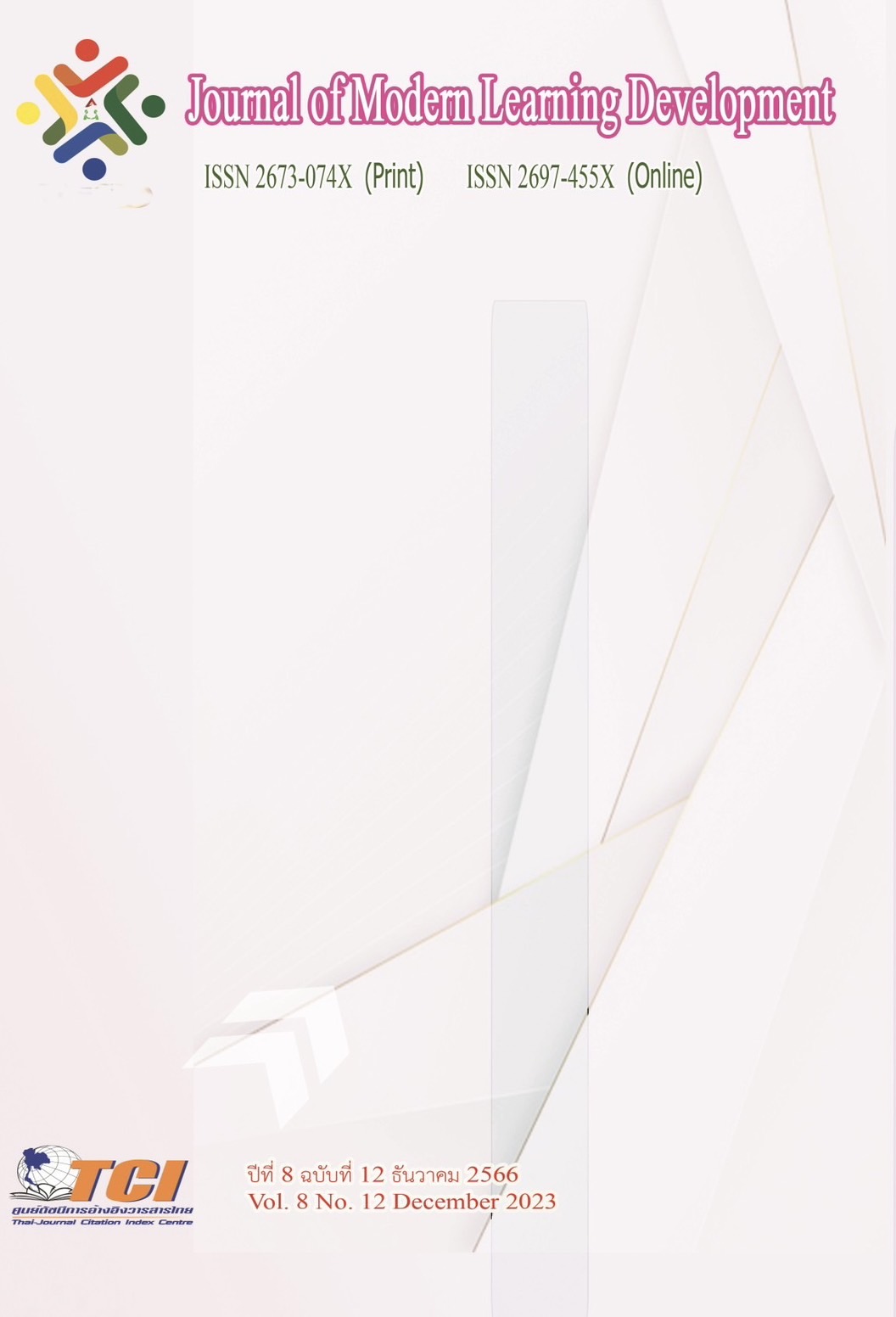Guidelines for Solid Waste Management in Nam Reum Sub-district Administrative Organization, Muang District, Tak Province
Main Article Content
Abstract
The objectives of this research were: 1) to study the state of the solid waste management in Nam Reum Sub-district Administrative Organization, Muang District, Tak Province, 2) to compare the personal factors and the solid waste management in Nam Reum Sub-district Administrative Organization, Muang District, Tak Province, and 3) to present the guidelines for the solid waste management in Nam Reum Sub-district Administrative Organization, Muang District, Tak Province. This study applied the Mixed Method Research with the Quantitative Research by the Survey Research. The sample was 386 people who was more than 18 years old from the table of Yamane. The tool of this study was the questionnaire with the 0.873 of reliability. The statistics used Frequency, Percentage, Mean, Standard Deviation, t-test and F-test with One-Way ANOVA. Moreover, the Qualitative Research used the in-depth interview from 9 key informants and the data analysis with the description. The results of the research were as follows: 1) Overall, the state of the solid waste management was at the high level. 2) The comparison of the personal factors to the solid waste management found that the people having the different gender, age, status, education, occupation, income and duration of living in this area had no the different opinion to the solid waste management The hypothesis was denied. and 3) The guidelines for the solid waste management were the Sub-district Administrative Organization should have the participatory operation by supporting the projects and activities in supporting and promoting the knowledge, understanding and practice in 3Rs: reducing, reusing and recycling, give the importance in the resources with the participatory process “Think before use, reuse, and recycle”. The practice in 3Rs could reduce the solid waste and recycle them worthily. The solid waste that remained from the 3Rs should eliminate in the academic principles or transform to the synthetic oil and produce the electricity with the model process of the processing plant to the oil and electricity.
Article Details
References
กรมควบคุมมลพิษ. (2565). องค์ความรู้ “การเสริมสร้างศักยภาพองค์กรปกครองส่วนท้องถิ่นในการจัดการสิ่งแวดล้อม. กรุงเทพฯ : กระทรวงทรัพยากรธรรมชาติและสิ่งแวดล้อม.
กรมส่งเสริมการปกครองส่วนท้องถิ่น. (2550). มาตรฐานการจัดการขยะมูลฝอยและสิ่งปฏิกูล.กรุงเทพฯ : กระทรวงมหาดไทย.
กรมอนามัย. (2553). คู่มือการประเมินผลกระทบต่อสุขภาพ กรณีการจัดการขยะมูลฝอยสำหรับ องค์กรปกครองส่วนท้องถิ่น. กรุงเทพฯ : กระทรวงสาธารณสุข.
สมบูรณ์ ปัญญาธนกร, อภิวัฒน์ สมาธิ และวิวัฒน์ ฤทธิมา. (2562). แนวทางการบริหารจัดการขยะอย่างยั่งยืนในพื้นที่เทศบาลเมืองควนลัง อำเภอหาดใหญ่ จังหวัดสงขลา. การประชุมหาดใหญ่วิชาการระดับชาติและนานาชาติ ครั้งที่ 10 ณ ห้องประชุม อาคารคณะบริหารธุรกิจ มหาวิทยาลัยหาดใหญ่ อำเภอหาดใหญ่ จังหวัดสงขลา วันที่ 12 – 13 กรกฎาคม 2562 : 485-500.
องค์การบริหารส่วนตำบลน้ำรึม. (2565). แผนพัฒนาท้องถิ่น (2561-2565). ตาก : องค์การบริหารส่วนตำบลน้ำรึม.
อรรถนันท์ คำยิ่ง. (2564). แนวทางในการจัดการมูลฝอยของชุมชนแคมป์สน อำเภอเขาค้อ จังหวัดเพชรบูรณ์ โดยเน้นการมีส่วนรวมของชุมชน. วิทยานิพนธ์นี้รัฐประศาสนศาสตรมหาบัณฑิต (สาขาวิชารัฐประศาสนศาสตร์). วิทยาลัยการจัดการและพัฒนาท้องถิ่น มหาวิทยาลัยราชภัฏพิบูลสงคราม.


